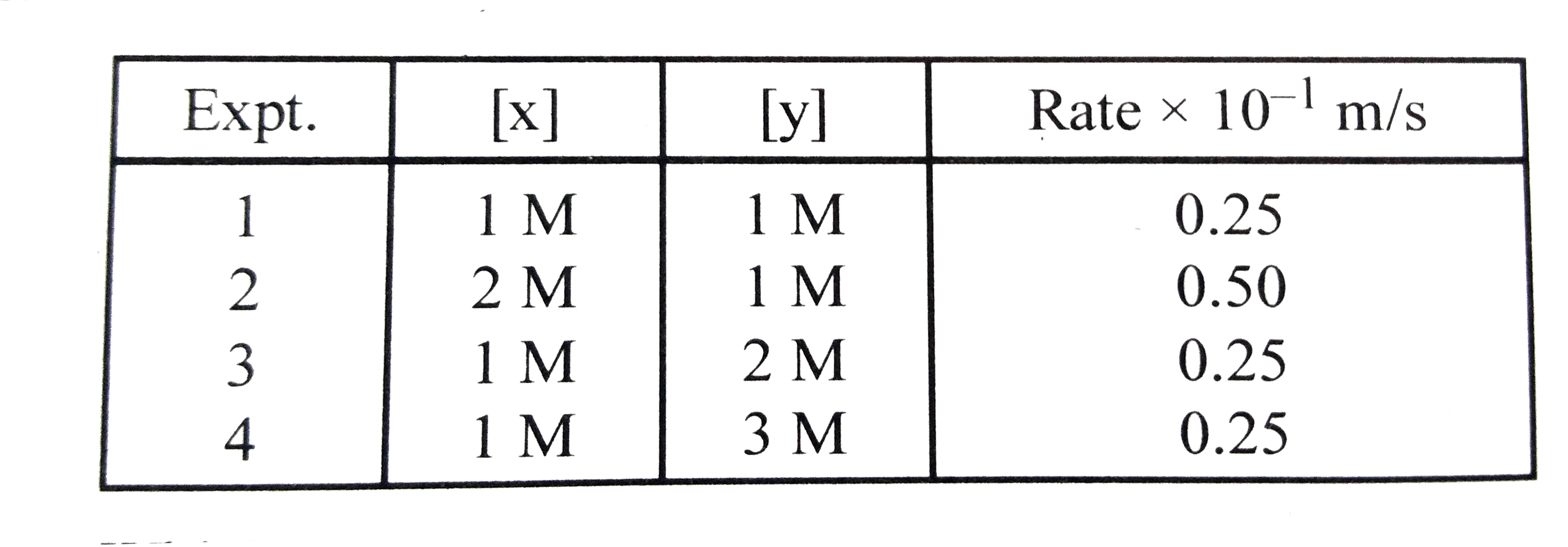A+2B→C+D for a reaction from following data correct rate law =

A
Rate =K[A]2[B]
B
rate=k[A]2[B]2
C
Rate =K[A][B]2
D
Rate =K[A][B]
Video Solution
Text Solution
The correct Answer is:C
Rate =k[A][B]2
Keeping [B]constant ,[A],is made a 4 times , rate also become 4 times , hence rate ∝[A].
keeping [A] constant ,[B] is doubled , rate becomes 4 times , hence rate ∝[B]2.
∴Rate=k[A][B]2
|
Updated on:21/07/2023
Topper's Solved these Questions
- BOOK - MARVEL PUBLICATIONCHAPTER - CHEMICAL KINETICSEXERCISE - TEST YOUR GRASP50videos
CHEMICAL KINETICS
- BOOK - MARVEL PUBLICATIONCHAPTER - BIOMOLECULESEXERCISE - TEST YOUR GRASP40videos
BIOMOLECULES
- BOOK - MARVEL PUBLICATIONCHAPTER - CHEMICAL THERMODYNAMICS AND ENERGETICSEXERCISE - MULTIPLE CHOICE QUESTIONS (TEST YOUR GRASP)50videos
CHEMICAL THERMODYNAMICS AND ENERGETICS
Similar Questions
Knowledge Check
- Question 1 - Select One
2A+2B→D+E for the reaction following mechanism has been proposed .
A+2B→2C+d( slow) A+2C→E ( fast )
The rate law expression for the reaction isARate=K[A]2[B]2BRate =[A]2[B]2[C]Crate =k=[A][B]2DRate =k[A][B] - Question 2 - Select One
For reaction A + 3B → 2C + D
Which one of the following is not correct ?ARate of disappearance of A = Rate of formation of DBRate of formation of C = 23 × Rate of disappearance of BCRate of formation of D = 13 × Rate of disappearance of BDRate of disappearance of A = 2 × Rate of formation of C - Question 3 - Select One
Rate law for the reaction, A+2B→C is found to be
Rate =k[A][B]
Concentration of reactant 'B' is doubled keeping the concentration of 'A' constant, the value of rate constant will be _______Athe sameBdoubledCquadrupledDhalved
For the reaction : A+2B→P the rate law is given by rate =k[A][B]2
From the following data , calculate x and y .
 .View Solution
.View SolutionFor the reaction 2A+B→A2B, the rate law given is
View SolutionFor a reaction ,A+B→C data is as follows :

the rate law for the reaction isView SolutionTaking the reaction, A+2B→ Products to be of second order, which of the following is/are the correct rate law expresisons (s)?
View Solution2A+B→D+E, for the reaction proposed mechanism A+B→C+D (slow), A+C→E (fast). The rate law expression for the reaction is
View Solution



